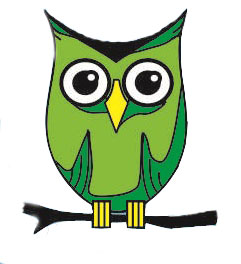Evaluating the phylogenetic relationship of a dwarf honey bee through cytochrome oxidase subunit 1 (COX1) gene sequence databases
Abstract
Keywords
Full Text:
PDFReferences
Wongsiri, S., Lekprayoon, C., Thapa, R., Thirakupt, K., Rinderer, T. E., Sylvester, H. A., Oldroyd, B. P., & Booncham. Comparative biology of Apis andreniformis and Apis florea in Thailand. Bee World. 77, 23-35 (1996).
Rinderer, T. E., Oldroyd, B. P., Wongsiri, S., Sylvester, H. A., Deguzman, L. I., Potichot, S., Sheppard, W. S., & Buchmann, S. L. Time of drone flight in 4 honey bee species in South-Eastern Thailand. J Apic Res. 32, 27-33 (1993).
Abrol, D. P. Foraging behavior of Apis florea F., an important pollinator of Allium cepa L. J. Apic. Res. 49, 318-325 (2010).
Jasmi, J. Tumbuhan yang dikunjungi lebah pekerja Apis (Hymenoptera: Apidae) di Sumatera Barat. Jurnal Saintek, 5, 38-45 (2013).
Otis, G.W. Distributions of recently recognized species of honey bees (Hymenoptera, Apidae - Apis) in Asia. J. Kansas Entomol. Soc. 69, 311–333 (1996).
Hepburn, H. R. & Radloff S. E. Biogeography of the dwarf honeybees, Apis andreniformis and Apis florea. Apidologie. 42, 293–300 (2011).
Haddad, N., Fuchs, S., Hepburn, H.R., & Radloff, S.E. Apis florea in Jordan: source of the founder population. Apidologie. 40, 508-512 (2009).
El-Niweiri, M. A. A, Moritz, R. F. A., & Lattorff H. M. G. The invasion of the dwarf honeybee, Apis florea, along the river Nile in Sudan. Insects. 10, 405 (2019).
Salem, M. M., Shebl, M. A., Kamel, S. M., & El Demerdash H.A.M. The Molecular origin of the dwarf honey bee newly recorded from Egypt, Entomol. Appl. Sci. Lett. 7, 76-80 (2020).
Takahashi, J., Deowanish, S., & Okuyama, H. Analysis of the complete mitochondrial genomes of two dwarf honeybee species, Apis florea and Apis andreniformis (Insecta: Hymenoptera: Apidae), in Thailand. Mitochondrial DNA Part B. 3, 350-353 (2018).
Kumar, S., Stecher, G., Li, M., Knyaz, C., & Tamura, K. Mega x: molecular evolutionary genetics analysis across computing platforms. Mol. Biol. Evol. 35,1547-1549 (2018).
Raffiudin, R., Salmah, S., & Jambak J. Distribution, nesting trees and genetic diversity of Apis andreniformis in West Sumatra. in The Future Role of Dwarf Honey Bees in Natural and Agricultural Systems (Abror D.P), 279-293 (2020).
Rattanawannee, A., Chanchao, C. & Wongsiri, S. Morphometric and genetic variation of small dwarf honeybees Apis andreniformis Smith, 1858 in Thailand. Insect Sci. 14, 451-460 (2007).
Chester, D., Zheng, & W., Zhu, C. A DNA Barcoding system integrating multi-gene sequence data. Methods Ecol. Evol. 6, 930-937 (2015).
Takahashi, J. I., Tingek, S., & Okuyama, H. The complete mitochondrial DNA sequence of endemic honeybee Apis nuluensis (Insecta: Hymenoptera: Apidae) inhabiting Mount Kinabalu in Sabah Province, Borneo Island. Mitochondrial DNA B Resour. 2, 585-586 (2017).
Yang, J., Xu, J., He, S., & Wu, J. The complete mitochondrial genome of wild honeybee Apis florea (Hymenoptera: Apidae) in south-western China. Mitochondrial DNA B Resour. 2, 845-846 (2017).
Raffiudin, R., & Crozier, R. H. Phylogenetic analysis of honey bee behavioral evolution. Mol Phylogenet Evol. 43, 543–552 (2007).
Najafzadeh, D., Nazemi, R. J., & Rastamzadah, J. Evaluation of phylogenetic characteristics of dwarf honeybee populations (Apis florea) using COI, intergenic region and COII. Cell. Mol. Biol Iranian Journal of Biology. 32, 242-254 (2019).
Wang, A. R., Kim, M. J., Lee, J. Y., Choi, Y. S., Thapa, R., & Kim I. The mitochondrial genome of the black dwarf honey bee, Apis andreniformis (Hymenoptera: Apidae). Mitochondrial DNA. 26, 914-6 (2015).
20 Wang A.R., Kim, J. S., Kim, M. J., Kim, H., Choi, Y. S. & Kim, I. Comparative description of mitochondrial genomes of the honey bee Apis (Hymenoptera: Apidae): four new genome sequences and Apis phylogeny using whole genomes and individual genes. J. Apic. Res. 57, 484-503 (2018).
Ilyasov, R. A., Youn, H. G., Lee, M., Kim, K. W., Proshchalykin, M. Y., Lelej, A. S., Takahashi, J., & Kwon, H. W. Phylogenetic relationships of Russian Far-East Apis cerana with Other North Asian Populations. J. Apic. Sci. 63, 289-314 (2019).
Cejas, D., López-López, A., Muñoz, I., Ornosa, C., & De la Rúa, P. Unveiling introgression in bumblebee (Bombus terrestris) populations through mitogenome-based markers. Anim Genet. 51, 70-77 (2020).
Wakamiya, T, Tingek, S., Okuyama, H., Kiyoshi, T., & Takahashi, J. The complete mitochondrial genome of the cavity-nesting honeybee, Apis koschevnikovi (Insecta: Hymenoptera: Apidae), Mitochondrial DNA Part B. 2, 24-25 (2017).
DOI: https://doi.org/10.26555/symbion.11753
Refbacks
- There are currently no refbacks.
Copyright (c) 2023 Nurul Insani Shullia

This work is licensed under a Creative Commons Attribution-ShareAlike 4.0 International License.

Symbion organized by
Deparment of Biology Education
Faculty of Teacher Training and Education
Universitas Ahmad Dahlan, Yogyakarta
Campus 4 UAD Jl. Ringroad Selatan, Kragilan, Tamanan, Banguntapan, Bantul,
Special Region of Yogyakarta, 55191